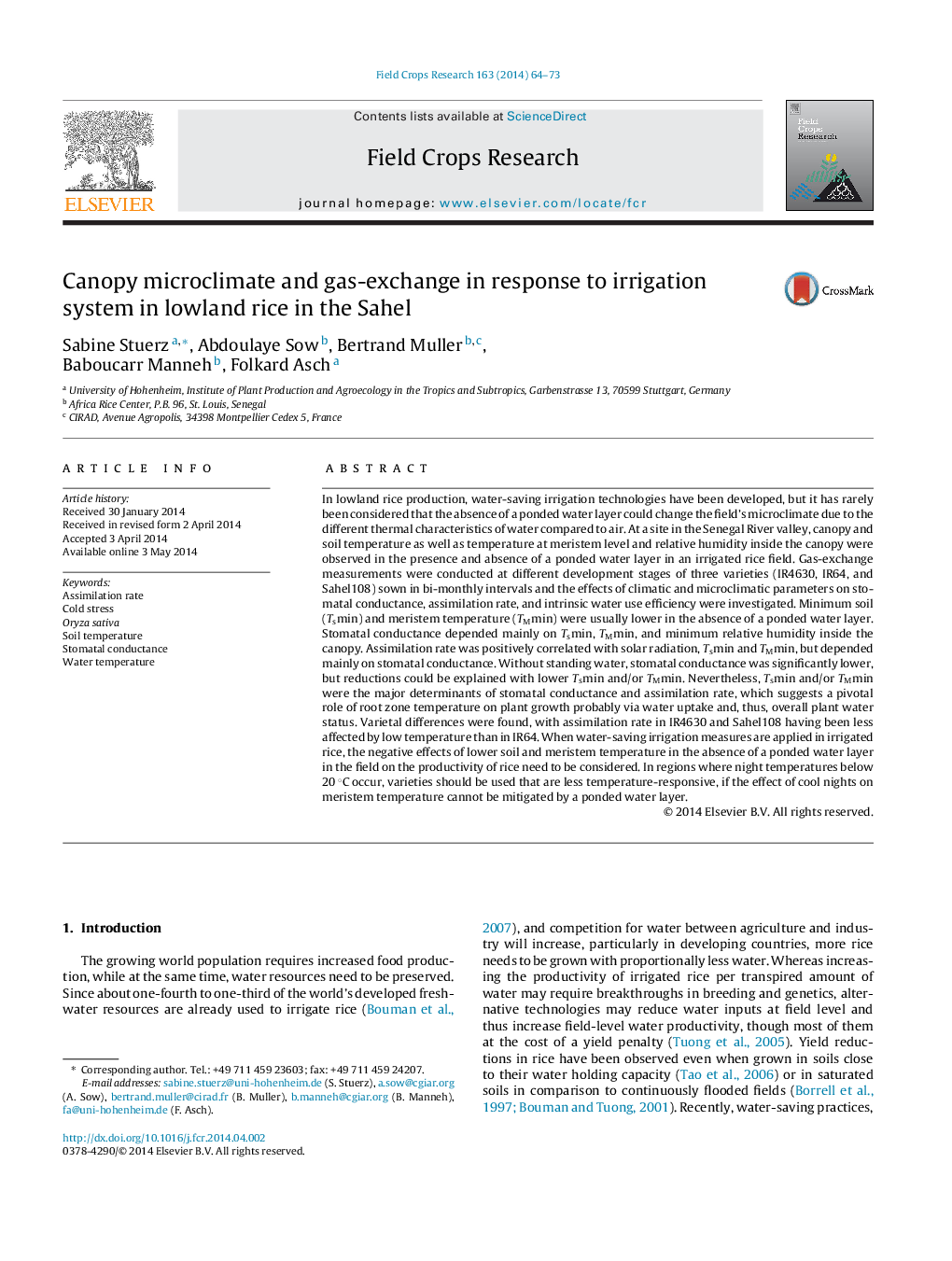| Article ID | Journal | Published Year | Pages | File Type |
|---|---|---|---|---|
| 4510112 | Field Crops Research | 2014 | 10 Pages |
•Microclimate was compared between flooded and non-flooded lowland rice fields.•Gas-exchange parameters were correlated with climatic and microclimatic parameters.•Stomatal conductance showed a high correlation with soil and meristem temperature.•Assimilation rate depended mainly on stomatal conductance.•Higher minimum soil/meristem temperature in flooded fields led to higher assimilation rates.
In lowland rice production, water-saving irrigation technologies have been developed, but it has rarely been considered that the absence of a ponded water layer could change the field's microclimate due to the different thermal characteristics of water compared to air. At a site in the Senegal River valley, canopy and soil temperature as well as temperature at meristem level and relative humidity inside the canopy were observed in the presence and absence of a ponded water layer in an irrigated rice field. Gas-exchange measurements were conducted at different development stages of three varieties (IR4630, IR64, and Sahel108) sown in bi-monthly intervals and the effects of climatic and microclimatic parameters on stomatal conductance, assimilation rate, and intrinsic water use efficiency were investigated. Minimum soil (Tsmin) and meristem temperature (TMmin) were usually lower in the absence of a ponded water layer. Stomatal conductance depended mainly on Tsmin, TMmin, and minimum relative humidity inside the canopy. Assimilation rate was positively correlated with solar radiation, Tsmin and TMmin, but depended mainly on stomatal conductance. Without standing water, stomatal conductance was significantly lower, but reductions could be explained with lower Tsmin and/or TMmin. Nevertheless, Tsmin and/or TMmin were the major determinants of stomatal conductance and assimilation rate, which suggests a pivotal role of root zone temperature on plant growth probably via water uptake and, thus, overall plant water status. Varietal differences were found, with assimilation rate in IR4630 and Sahel108 having been less affected by low temperature than in IR64. When water-saving irrigation measures are applied in irrigated rice, the negative effects of lower soil and meristem temperature in the absence of a ponded water layer in the field on the productivity of rice need to be considered. In regions where night temperatures below 20 °C occur, varieties should be used that are less temperature-responsive, if the effect of cool nights on meristem temperature cannot be mitigated by a ponded water layer.
